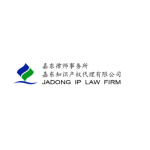In 1996, the State Administration for Industry and Commerce of PR China promulgated the Interim Provisions on the Recognition and Management of Well-known Trademarks, and this is the first time a system for the protection of well-known trademarks has been clearly set out and established in China. The protection of well-known trademarks has been a focus of society and relevant enterprises, especially in recent years.
New regulations for well-known trademarks
On November 19 2019, the China National Intellectual Property Administration (CNIPA) issued Notice on Strengthening the Investigation and Handling of the Work related to the Protection of Well-known Trademarks in Trademark Illegal Cases (herein after referred to as the notice).
As we all know, at present, there are two ways to recognise well-known trademarks in China. These are administrative recognition and judicial recognition. Administrative recognition includes recognition of well-known trademarks by the CNIPA in trademark dispute cases, such as trademark oppositions, invalidation cases etc., and the recognition of well-known trademarks in trademark illegal cases, in which requests for well-known trademark recognition are reported from the lower level administration of industry and commerce to the higher level administration. Judicial recognition means recognition of well-known trademarks by the court in civil infringement litigation.
The notice mainly deals with strengthening the protection of well-known trademarks in trademark illegal cases from three angles: strictly investigating and handling well-known trademark cases in accordance with the statutory authority and time limit; effectively regulating the application and use of well-known trademarks; highlighting the key points and strengthening the protection of well-known trademarks.
Statutory authority and time limit for handling cases involving well-known trademark recognition
According to the notice, the authority that has the right to accept an application for well-known trademark recognition in a trademark case is the Intellectual Property Management Department (IPMD) at or above the municipal (prefecture, state) level, or IPMD of a county (city, district) directly under county jurisdiction approved by the CNIPA.
With regard to the time limit for investigation and handling of such cases, the notice stipulates that the competent authority shall decide whether to accept a case within 15 working days from receiving the written application materials submitted by the right owner, and this time limit may be extended by 15 working days in special circumstances. If the application passes the preliminary examination smoothly, the application for recognition of a well-known trademark and the copy of request materials should be submitted to the IPMD at province level (or autonomous region and municipality directly under the central government level) within 30 days from the date of receiving the case. If the application does not pass the preliminary examination, the reasons must be told to the right owner in a timely manner.
After receiving the application materials for well-known trademark recognition submitted by the lower level IPMD, the IPMD at the province level (or autonomous region and municipality directly under the central government level) shall examine the same within 30 days. If the application is in conformity with the regulations, a written request shall be submitted to the CNIPA, together with the filing materials and copies of evidences.
The province level IPMD is responsible for the substantive examination of the application materials. The substantive examination is mainly there to carry out detailed verification and examination of the application documents and evidence, including all-round verification of the necessity for recognising the well-known trademark, etc. If it is considered that the trademark should be recognised as well-known after examination, the application will be submitted to the CNIPA in written form, and finally the CNIPA shall decide whether to recognise the trademark as a well-known mark.
Recognition and use of well-known trademarks
First of all, in terms of application materials, according to the notice, the trademark owner should prepare the application materials for well-known trademark recognition according to the requirements of the summary form. During the preparation, it is important that the materials contain some important data, such as the duration of use of the trademark, advertising volume, sales volume, taxes, industry ranking, etc. It is also very helpful to provide certifications made by third-party agencies with credibility, customs or by national industry associations to reflect the extent of the reputation of the trademark. At the same time, it is necessary to apply the relevant provisions of the Trademark Law accurately to avoid errors in the application of legal provisions.
Secondly, the notice emphasises that enterprises should not regard well-known trademarks as an honorary title or use well-known trademarks prominently. The IPMD at all levels is required to distinguish correctly the boundary between proper use and illegal use of the words "well-known trademark". An enterprise may make a factual statement about the records of trademark protection in its business activities. If enterprises intend to weaken the legal nature of the recognition and protection of well-known trademarks, or regard the "well-known trademark" as an honorary title and use it prominently for the purpose of publicising the enterprise or promoting the goods or services provided by the enterprise, such illegal use will be investigated and punished in accordance with Paragraph 5 Article 14 of the Trademark Law.
Protection of well-known trademarks
According to the notice, the protection of well-known trademarks mainly includes the following three aspects.
Firstly, timely protection. If the application has been approved and the trademark has been recognised as well-known by the CNIPA in a case involving an illegal trademark, the initial authority accepting the case will protect the trademark within 60 days from the approval, including imposing administrative punishment on the infringers and reporting the punishment decision and forwarding relevant documents to the verification department. After that, the verification department shall report it to the Intellectual Property Protection Division of the CNIPA.
Secondly, in a circumstance where a trademark has been protected as a well-known trademark, and the goods involved in the case are the same or similar to the goods involved in the previous case in which the trademark was recognised as well-known, and the adverse party has no objection to the well-known status of the trademark, the relevant authority accepting the case, may, according to the record of protection and relevant evidence, determine whether to give protection to a well-known trademark. If the adverse party has objections and the reasons and the evidences provided by the adverse party are obviously insufficient to support the objections, the relevant authority accepting the case can still do this.
Thirdly, the notice emphasises that all regions of China should focus on well-known trademark protection and further strengthen the administrative protection of trademarks. They should summarise and sort out all the well-known trademarks that have been recognised within the jurisdiction, which have been continuously used by the trademark owner, record a contact list of cases involving well-known trademarks, and submit the list to the Intellectual Property Protection Division of the CNIPA. The CNIPA will establish the relevant databases of well-known trademarks, which will be open to trademark administrative enforcement officials to support local enforcement work.
To strengthen the protection of well-known trademarks in cases involving illegal trademarks concerns the vital interests of the parties concerned, and is also an important duty of the CNIPA as well as IPMD at all levels. The CNIPA will include the protection of well-known trademarks in its annual performance appraisal in relation to intellectual property protection, and supervise the relevant work in due time. In future, the CNIPA will deploy local IPMDs to focus on the protection of well-known trademarks, strengthen trademark protection, effectively protect the legitimate rights and interests of relevant trademark owners, improve administrative efficiency, optimise the business environment as a response to the deployment of the Party Central Committee and the State Council with practical actions, and provide strong support for establishing a good business environment.
Trademark law for well-known trademarks
More articles for the protection of well-known trademarks were included in the fourth amendment of the Trademark Law which came into force on November 1 2019.
Bad faith filing
More articles were included to crack down on the activities of malicious registration of a large number of trademarks, especially trademarks imitating and copying the well-known trademarks of others.
As known to all, China amended the Trademark Law for the fourth time. The main purpose of this amendment is to crack down on activities related to malicious trademark registration, including the activity of maliciously registering others' well-known trademarks.
Article 4 of the amended Trademark Law stipulates that "any application for trademark registration that is malicious and is not filed for the purpose of use shall be rejected."
According to this article, firstly, malicious trademark applications could be rejected by the CNIPA ex officio. During trademark examination, when the examiner discovers a suspicious trademark application, the examiner should analyse and judge the application based on various factors and evidence. For instance, the examiner will determine whether or not it copies or imitates others' well-known trademarks, check the application history and relevant record of assignment, as well as possible illegal records of the applicant by checking its business licence, enterprise credit information publicity system, etc. When a decision can be made that the application is a malicious one, the examiner can reject the application ex officio. In practice, there are some trademark applicants who file in bad faith a number of trademark applications which are others' well-known marks in different classes, with the purpose of selling such marks to earn money. Under the amended Trademark Law, such malicious applications could be rejected by the CNIPA directly.
Secondly, the owner of a well-known trademark can initiate trademark opposition and invalidation actions against malicious applications/registrations in accordance with relevant legal provisions such as Article 4, Article 13 and Article 41 of the amended Trademark Law. According to our experience, more and more favourable decisions are received for trademark oppositions and invalidations if such bad faith exists and can be proved. For example, one applicant filed a large number of trademark applications and most of them were others' well-known trademarks.
According to the CNIPA's data, in 2018, about 100,000 abnormal trademark applications were rejected in examination and opposition procedures, and 24,000 bad faith applications were rejected in the second quarter of 2019, accounting for about 4.2% of the rejections in the same period.
Penalties for infringement
Penalties were increased for trademark infringement, including infringement upon the prior rights of well-known trademarks.
Article 63 of the amended Trademark Law stipulates the compensation amount for infringement which is determined by the actual losses, the gains derived, and the licensing fee of the infringed trademark. In serious cases, the compensation amount shall be determined by the aforesaid method based on one to five times of the determined amount (formerly, it was one to three times). The compensation amount shall include reasonable expenses incurred by the right holder to curb the infringement.
This article also stipulates that where it is difficult to determine the losses, gains or licensing fee, the court shall rule on a compensation amount of not more than RMB 5 million based on the extent of the infringement (formerly, it was 3 million).
Penalties for trademark agencies
Articles relating to penalties on trademark agencies were included in the amended Trademark Law, which stipulates that trademark agencies shall be punished if they assist trademark applicants with filing applications in bad faith. It also refers to bad faith filing for well-known trademarks. It requires agencies to refuse the bad faith filing for well-known trademarks. Recently some agencies received a fine of RMB100,000 for assisting a bad faith applicant for the registration of "火神山" (Huo Shen Shan) and "雷神山"(Lei Shen Shan), which are the names of the hospitals set up to fight coronavirus. This is a strong warning to agencies assisting bad faith filings for well-known trademarks.

Rebecca Liu
Rebecca is a partner and trademark attorney at Jadong IP Law Firm. She is the head of the trademark team. Prior to joining Jadong, she was the head of the trademark team of another big law firm.
Rebecca specialises in trademark prosecution and enforcement. She has been practising in this area for 15 years and has extensive experience. Her areas of practice include trademark strategic planning, advising on trademark availability, trademark search and monitoring, assignment, licensing, renewal, opposition, invalidation, cancellations, taking actions against counterfeiting and IP infringements, negotiating for trademark acquisition and licences, dealing with domain name registration and disputes, and copyright and unfair competition matters. Rebecca has assisted many well-known brand owners, including both domestic and international clients, with developing their branding strategies and protecting their trademark rights in China and internationally.

Yunze Lian
Yunze Lian is founder and head of Jadong IP Law Firm. He started his legal career in 1982 and worked at CCPIT for 14 years. He has practised in the IP field for 35 years and is recognised as an IP expert both by the international brand owners he represents and by the IP community in general. He is a frequent speaker at many international conferences and a panellist for several domain name dispute resolution centres. He is a member of the INTA Internet Committee and MARQUES China Team. He regularly receives awards from a variety of legal publications, like MIP, WTR, Chambers Asia-Pacific, Asia Leading Lawyers, Asia IP, and Expert Guides. He writes extensively in many international publications circulated in European countries.










